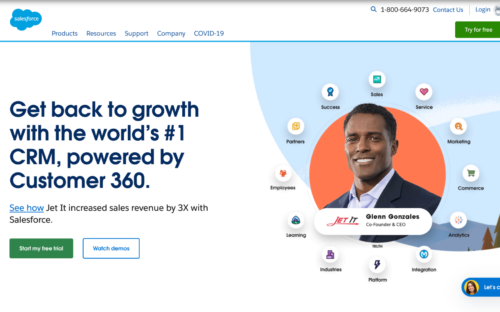Article's Content
Howie Liu, co-founder, and CEO of the cloud software company Airtable has a knack for disruptive innovation.
In February 2010, Liu founded a CRM software company called Etacts that raised $700,000 in angel funding from a range of investors, including actor Ashton Kutcher. In less than a year, Salesforce acquired Etacts to integrate the promising technology into its own applications.
While working at Salesforce as a product manager, Liu saw an opportunity to redefine spreadsheets beyond numerical analysis.
Obsessed with the idea, Liu quit his job after a year and launched Airtable with two partners, Andrew Ofstad and Emmett Nicholas. This powerful solution empowers non-techies to build simple and intuitive apps faster, helping to boost team productivity and company growth.
Over the years, the cloud software company has become an industry heavyweight:
- 500+ employees
- $65.0M revenue in 2021, with 94.03% YoY growth
- A $5.77B valuation, with a fresh $270 million in Series E funding
- 200K organizations as customers, including industry giants like Netflix, Forbes, IBM, HBO, Expedia, and Medium
Airtable achieved all this in less than ten years! Of course, the company didn’t achieve success overnight. Instead, it took a series of deliberate, consistent small steps that eventually caused an industry-wide explosion.
This article is a deep dive into Airtable’s marketing strategy playbook. Beyond building a great product, Airtable’s content marketing strategy has played a significant role in establishing the brand’s success—a step-by-step process any brand can apply. We will explore how Airtable used search, outreach, and content to build a $5.77 billion B2B empire.
Want to Steal Airtable’s SEO Strategy? Download this checklist!
By downloading this resource, you’ll also start receiving a few emails per week on B2B growth and content marketing
How Airtable Uses Search Intent to Dominate SERPs
Every month, an estimated 243K people visit Airtable.com via organic search. That’s a lot of people. One of the major attraction spots on Airtable’s website is the templates landing page:
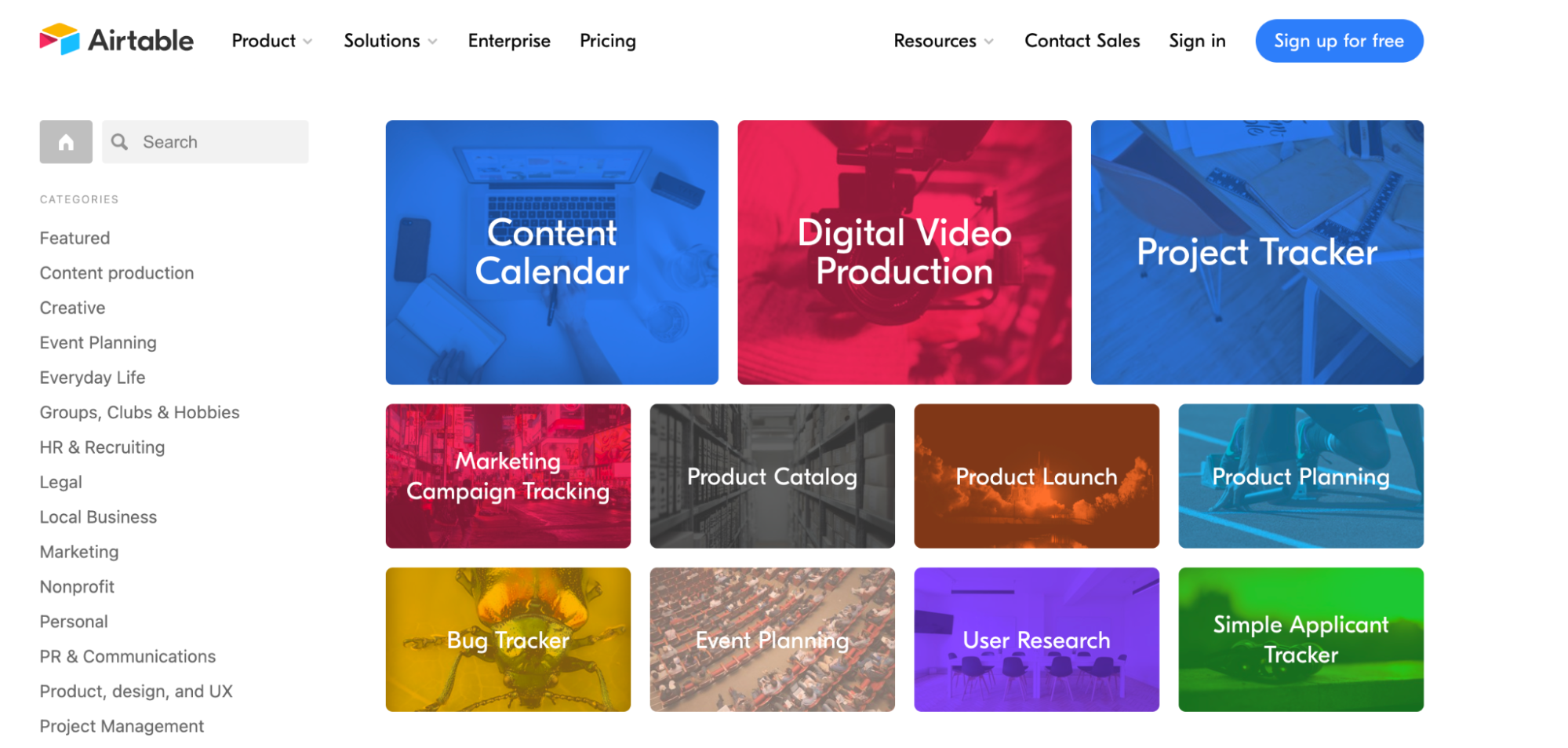
Airtable recognized that templates are highly valued, especially in the B2B world, so they used all kinds of templates in their marketing strategy.
Ranking for over 16.4K organic keywords, the template landing page attracts over 9500 visitors from organic search every month, with an organic traffic value of $42.4K. That means that if any brand wants to get similar results right now, the brand should have a marketing budget of at least $42,400. Woah!
The most impressive part of this strategy is the value Airtable’s template library offers. The landing page showcases a variety of use cases that show what different industries can achieve with the software. For instance, a UX researcher, designer, or product manager can use Airtable at each stage of the product life cycle:

What makes this strategy so successful is Airtable’s understanding of search intent. Search intent plays a significant role in generating search traffic. It is the reason why people type queries into search engines.
There are four types of search intent:
- Informational: Looking to learn more information (e.g., “What is Airtable?”)
- Commercial investigational: Trying to compare assets (e.g., “Airtable vs. Notion”)
- Navigational: Looking to get somewhere specific (e.g., “Personal CRM Template”)
- Transactional: Looking for an asset to buy, use, or download (e.g., “Airtable Pricing”)
You can picture a handful of keyword variations that can be used by people looking for solutions related to UX or other types of templates when you think about it from this lens:
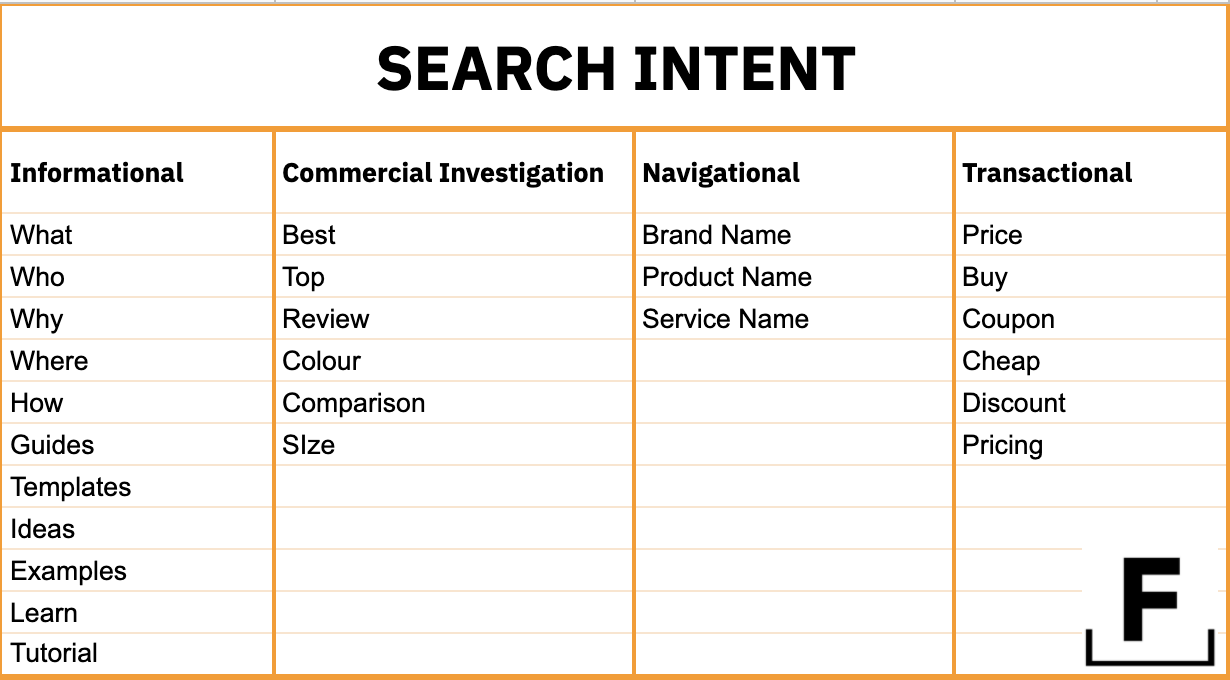
Airtable’s template landing page has a transactional intent that attracts users looking to discover and use any of Airtable’s templates. You can do a quick Google search of more than 41K different keywords that include the word “template,” and there’ll be one from Airtable tailor-made for you.
Another thing Airtable does right is creating niche landing pages.
A niche landing page addresses the needs of a specific customer segment. Salesforce adopts this strategy. The brand serves many different industries, and the navigational menu on Salesforce’s website shows these multiple audiences.
Likewise, Airtable serves different teams within an organization. To attract and engage these teams, Airtable creates individual landing pages, blog content, and solutions tailored to their needs:
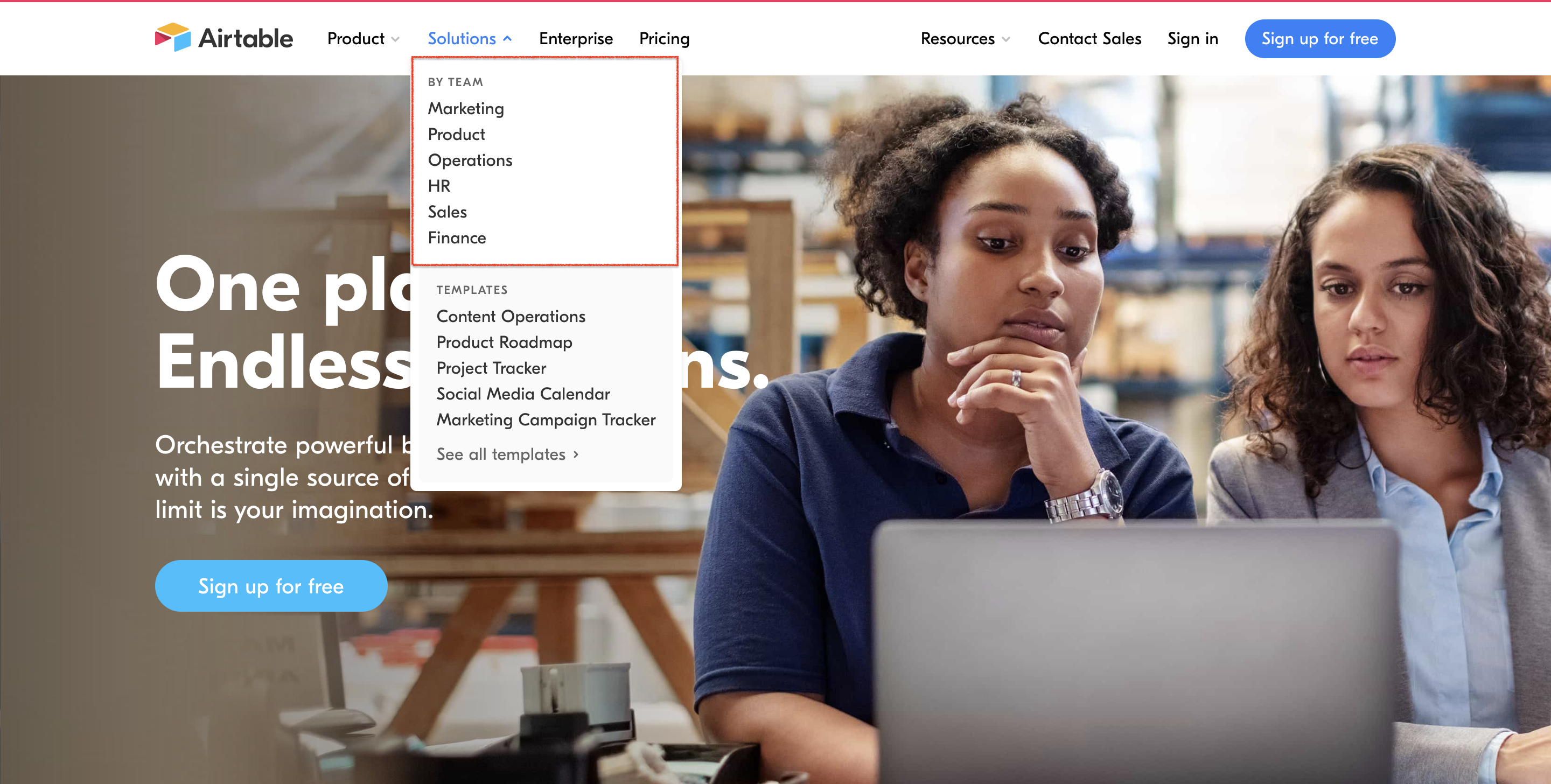
These landing pages let Airtable speak directly to customers, offering solutions that address their problems. Take the marketing niche, for instance:
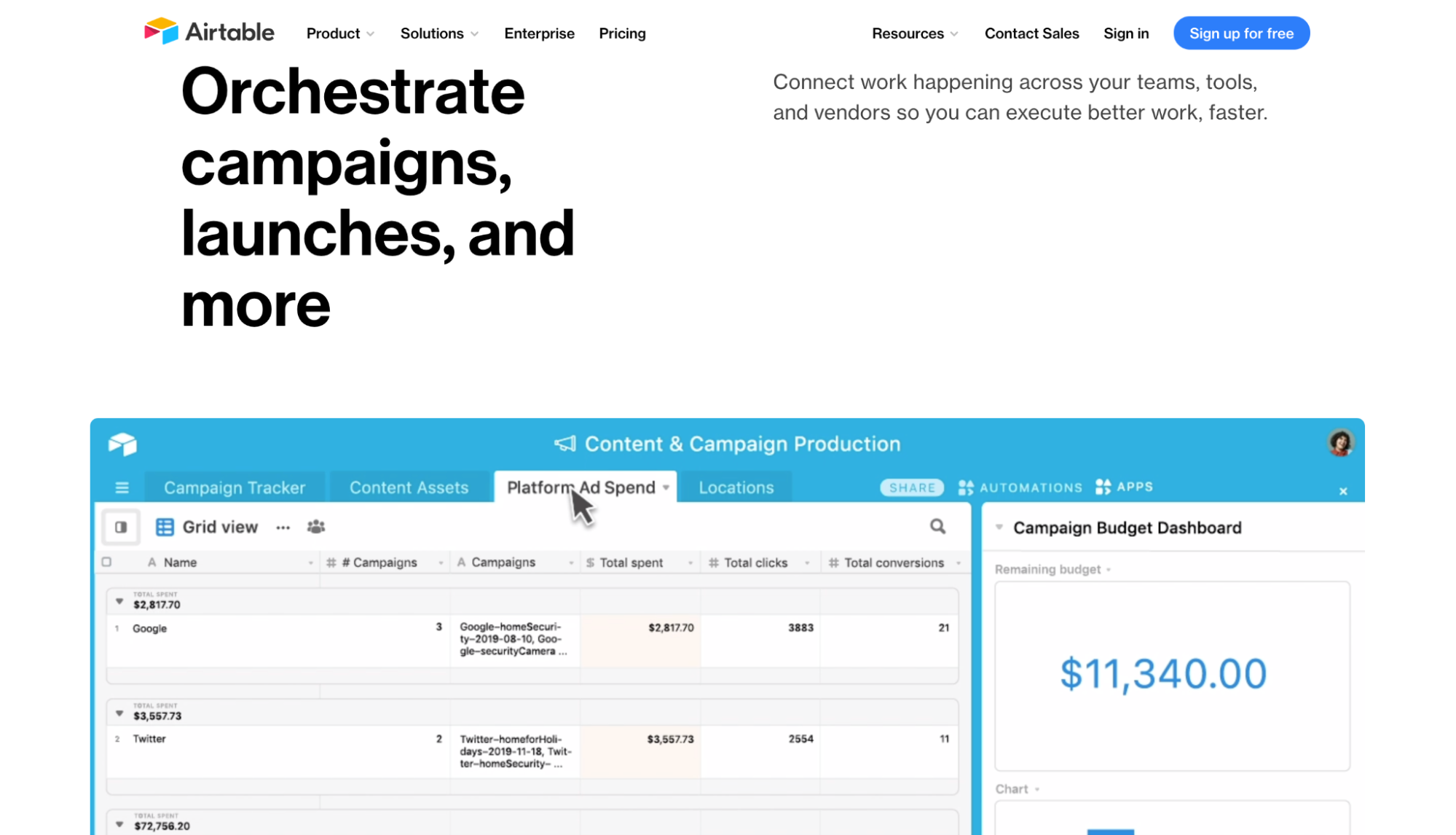
Airtable shows, using product screenshots, how marketers can use the software to create workflows and detailed reports using its report creator. But they don’t stop there.
The cloud software company also creates top-of-the-funnel, middle-of-the-funnel, and bottom-of-the-funnel content that satisfies search intent:
These content pieces show (not tell) prospects why Airtable is an excellent choice for their brand. The brand’s choice to feature a case study, demo, use case, and white paper on the landing page is excellent. Seeing the product in action, with real metrics and results, can inspire trust in prospects.
The team also follows up with a FAQ section:
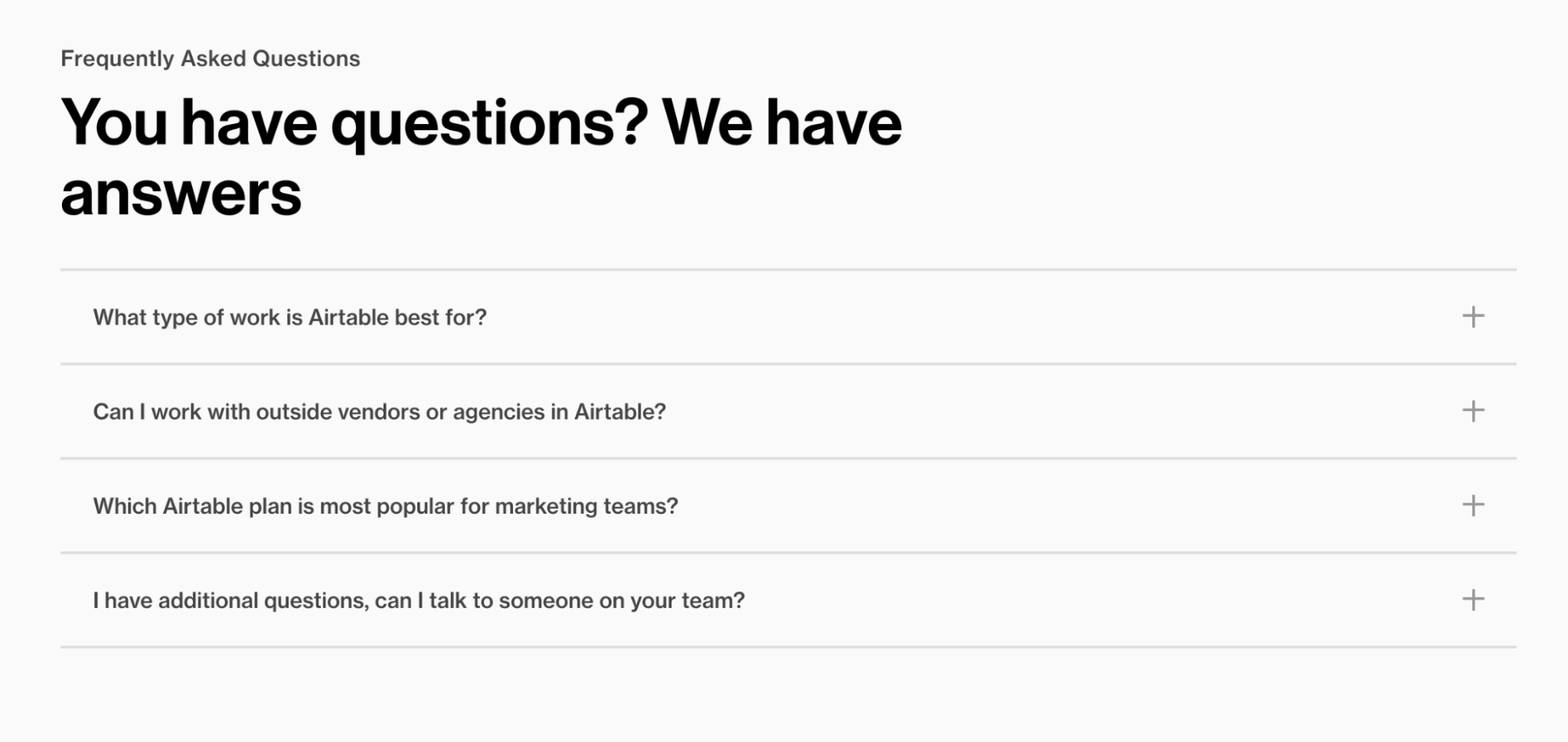
Your FAQ section is one of the most critical touchpoints in a conversion funnel. That’s where a visitor learns specific details of your product or service. When you do it right, you can offer clarity to visitors, boost conversions and sales.
Airtable recognizes the value of FAQs. They create one that answers primary questions visitors might have, further driving prospects down the sales funnel. To cover additional questions, they created a section where visitors can easily reach out to the sales team or the help center:
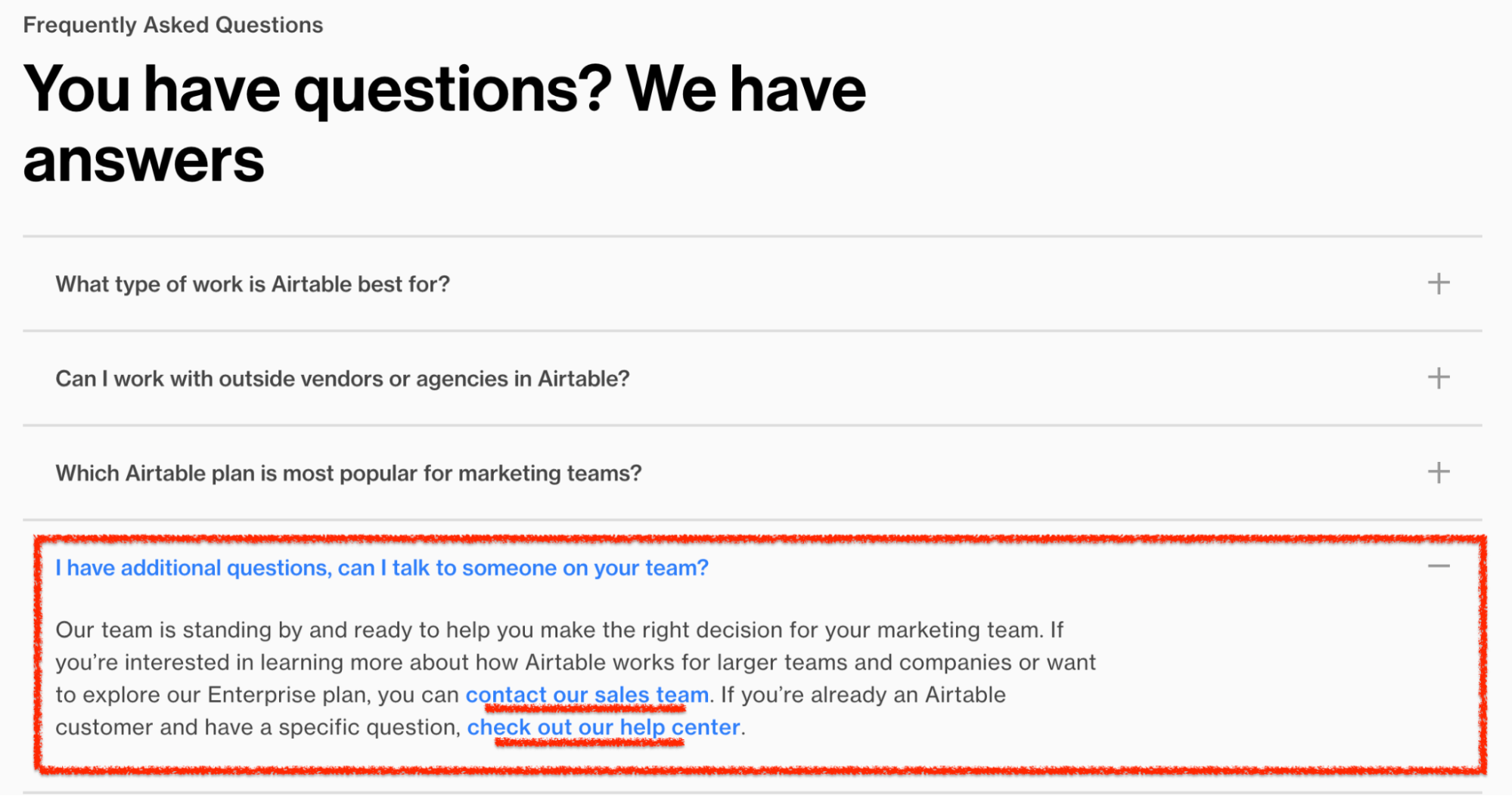
The help center has a variety of content that helps visitors learn more about the product as well as specific content to help product users:
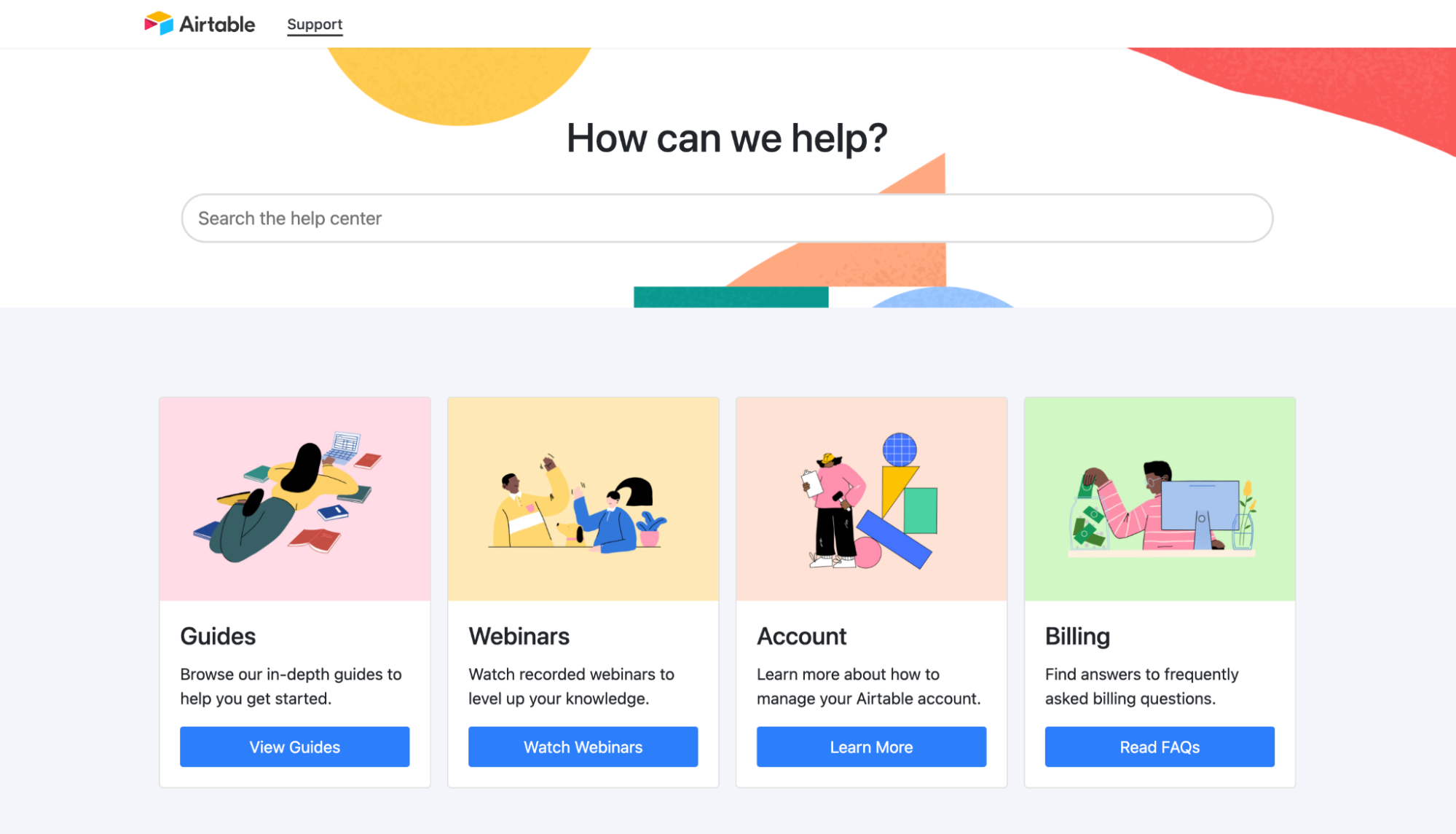
Of course, Airtable replicates this strategy across the other industry landing pages.
If you serve multiple customer segments, you should design a content strategy and a variety of landing pages that addresses each one of their unique needs. Sure, it can be a long, frustrating process. However, you’ll stand a better chance at attracting, engaging, and connecting better with the different audience segments.
Want to Steal Airtable’s SEO Strategy? Download this checklist!
By downloading this resource, you’ll also start receiving a few emails per week on B2B growth and content marketing
Airtable’s Social Proof Formula
If you’ve ever purchased a product because you read a user review or someone you know said something really nice about it, that was social proof in action!
And you’re not alone. Studies have shown that 92% of consumers are more likely to trust non-paid recommendations than any other type of advertising.
Social proof has helped many startups build customer trust, validate prospects’ buying decisions, boost sales, and improve their brand’s visibility.
No matter how impressed prospects are with your product or service page, they’ll almost always look to others—friends, family, industry experts, and even strangers— before they make a buying decision.
That’s because people trust people whose stories they can relate to, not self-promoting ads. They want to see and feel how your product has made life easier for others before they decide to give it a try.
Apart from having a great product, Airtable leverages the power of social proof at every step of the buying journey.
For instance, on Airtable’s home page, the company displays positive, personalized user reviews to show prospects that real people, not faceless brands, trust them.
Take this review from AutoDesk, for instance:
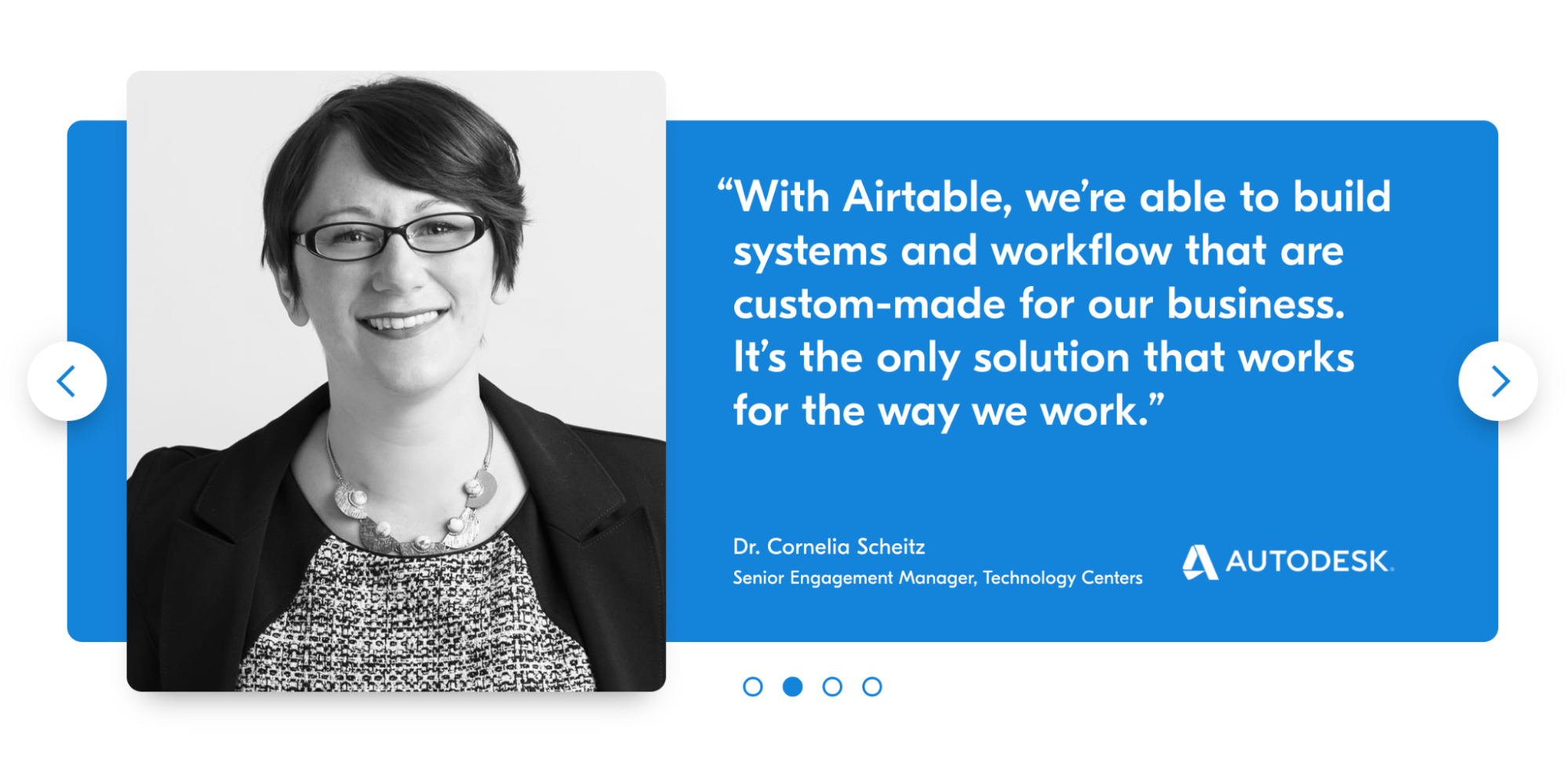
One thing Airtable gets right here is the use of name, title, and organization. Adding the name, title, and organization helps you build credibility with visitors. You show them that real people, not nameless, faceless brands, trust your brand to help achieve their goals. Notice Dr. Cornelia wearing a genuine smile. Somehow, a smile makes it feel like she enjoys using Airtable. According to a study on increasing “truthiness,” pairing a high-quality image with the user’s testimonial boosts prospects’ trust.
Another thing that Airtable gets right is showing the number and identity of users:
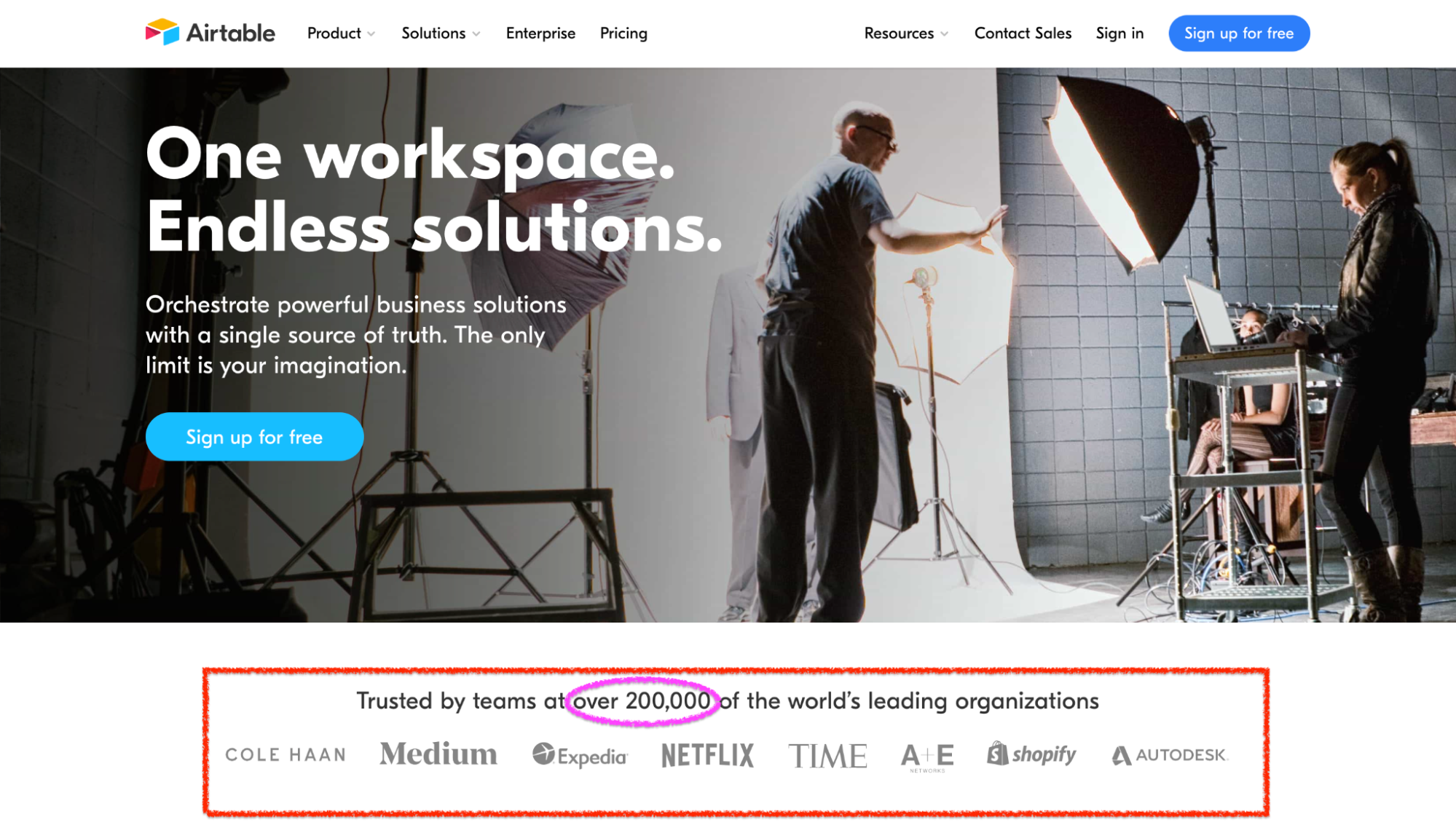
These numbers demonstrate that industry leaders trust Airtable so prospects can feel more confident trusting them as well.
Airtable also uses niche case studies to show the results users get from the product, like this one from Hubspot:
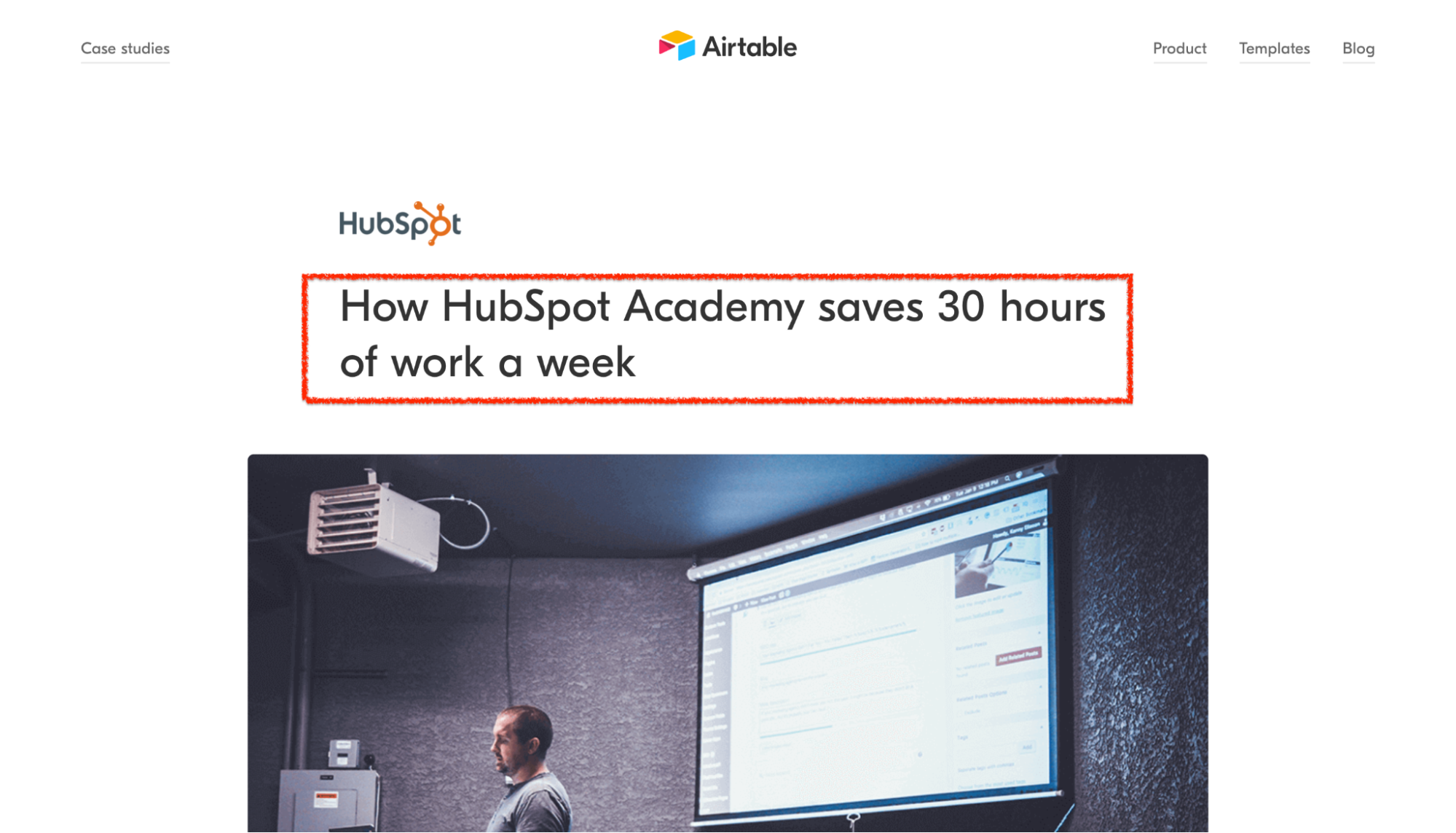
Showing how Hubspot stays on top of their game using Airtable is an excellent way to win buy-in from prospects. From the title, you can see the results Hubspot Academy gets from using Airtable. Airtable also includes a testimonial from a leader in the organization to show social proof:

Airtable’s Backlink Empire: How They Command Search Traffic
Backlinks are valuable for SEO because they act as a vote of confidence from one site to another. Search engines track backlinks to determine the trustworthiness of your content. The more links your page can get from other trusted pages, the better that page will look to search engines.
Airtable has more than 16.6 million backlinks from 63,800 domains, and as we mentioned before, the brand generates more than 242,000 visitors every year from organic traffic alone. This stat doesn’t include their ongoing paid traffic efforts as they target and invest in high intent and highly competitive keywords.
See how their backlinks have grown over time:
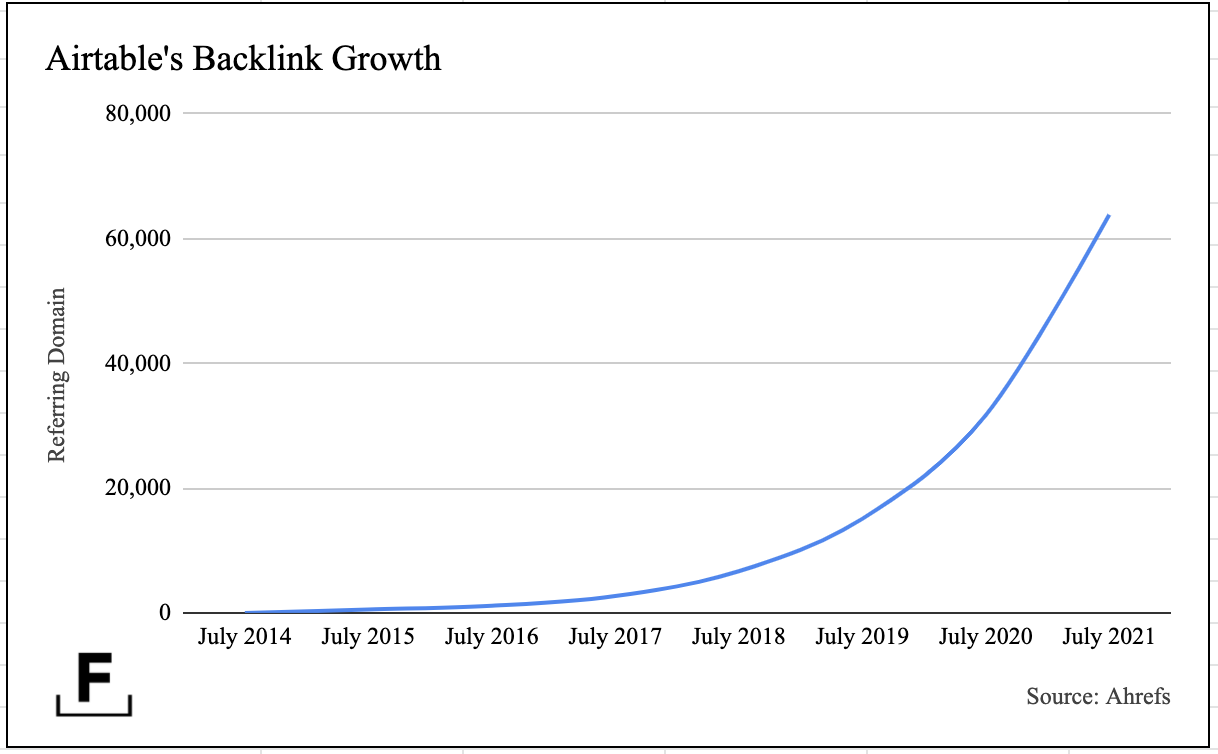
How did Airtable achieve this growth?
The brand invests in bringing on managers, developers, SEO/outreach specialists, writers, and optimizers who collaborate to create rich content across different search intents such as templates, guides, product updates, etc. that earn quality backlinks. On the other hand, if you’re wondering what the landscape of paid links looks like, there’s certainly a market for it, but there’s a cost to buying backlinks.
Want to Steal Airtable’s SEO Strategy? Download this checklist!
By downloading this resource, you’ll also start receiving a few emails per week on B2B growth and content marketing.
Missed Opportunity: Using Categories to Make Website Navigation Easier
Airtable has done a great job of creating content to meet different search intents. However, there are some gray areas that need urgent attention.
First, the hero section of Airtable’s landing page doesn’t offer much direction:
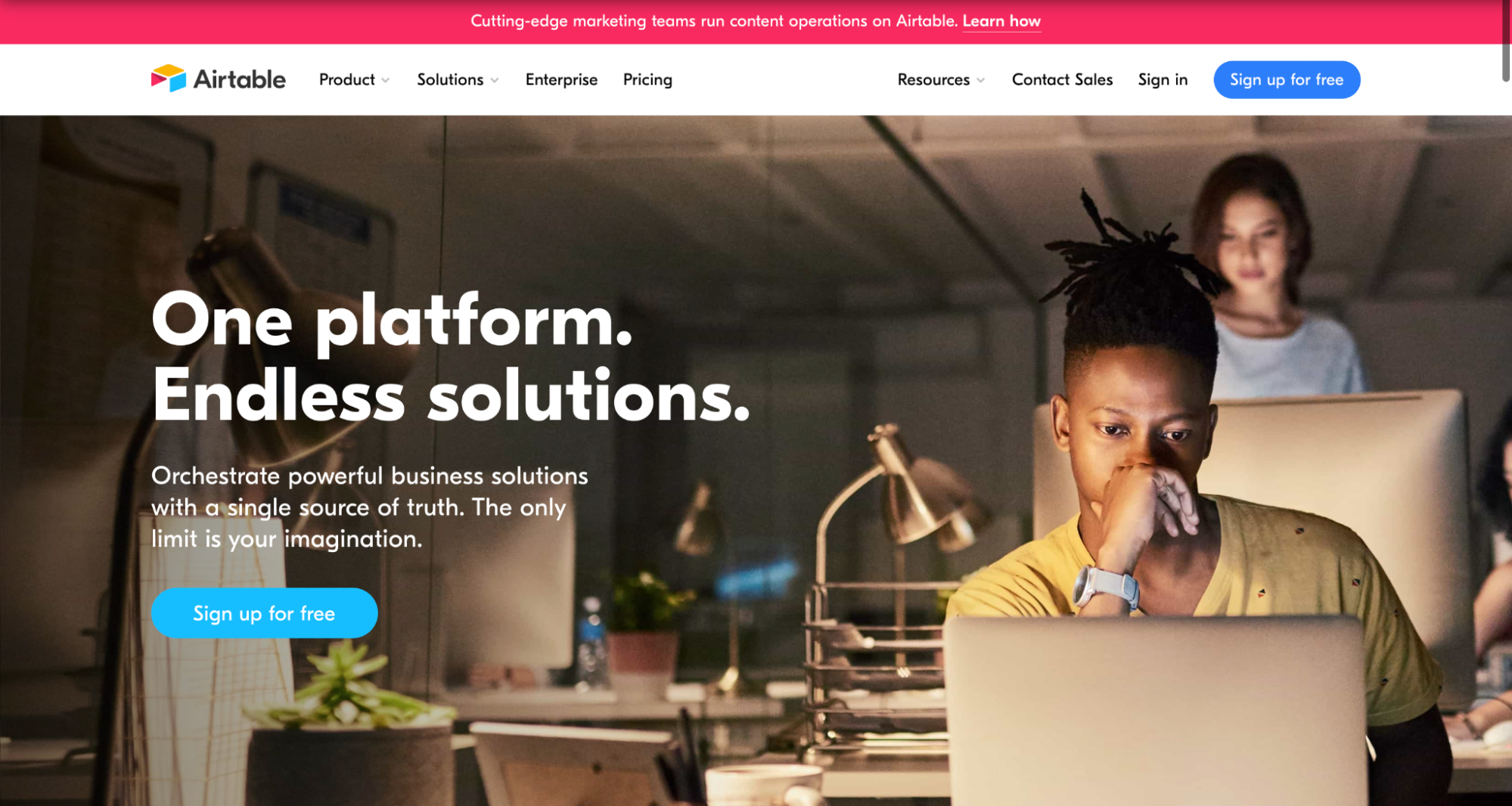
First-time visitors have to scroll down to grasp Airtable’s unique value proposition fully.
Airtable can show visitors their unique value proposition in action using a product demo. The demo would show visitors what Airtable can do and how they can use the tool to achieve their goals.
Currently, Airtable adopts a freemium model that allows prospects to explore the product before committing. They also have case studies from real users as well. However, adding a product demo or product screenshots below the hero section would allow prospects to see the product in action before sharing their information with Airtable.
Next, Airtable’s market positioning makes it difficult for new prospects and site visitors to tell if the brand is a cloud-based spreadsheet company, project management tool, or something else.
Across different platforms, Airtable’s description lacks consistency. A Google search for “What is Airtable” will reveal:

Notice the different terms used to describe Airtable: “relational database,” “collaboration tool,” “spreadsheet-database hybrid,” “modern spreadsheet tool,” and many others. Even though “spreadsheet” and “database” are used consistently, it’d be pretty difficult for a first-timer to grasp what the product really offers.
Though this inconsistency might seem insignificant given Airtable’s impressive results, clearer messaging would win them over faster.
Since Airtable serves multiple industries with different needs, the brand can refine its messaging to one that captures the entirety of its value.
In other words, they can create a new category. Studies have shown that companies who clearly define their category get the lion’s share of the market and profits in that industry.
A new category isn’t about creating a fancy tagline for your brand. Instead, it is a marketing approach that shows visitors what sets you apart from competitors.
Take Salesforce, for example. Salesforce clearly positions itself as the world’s #1 Customer Relationship Management (CRM) platform:
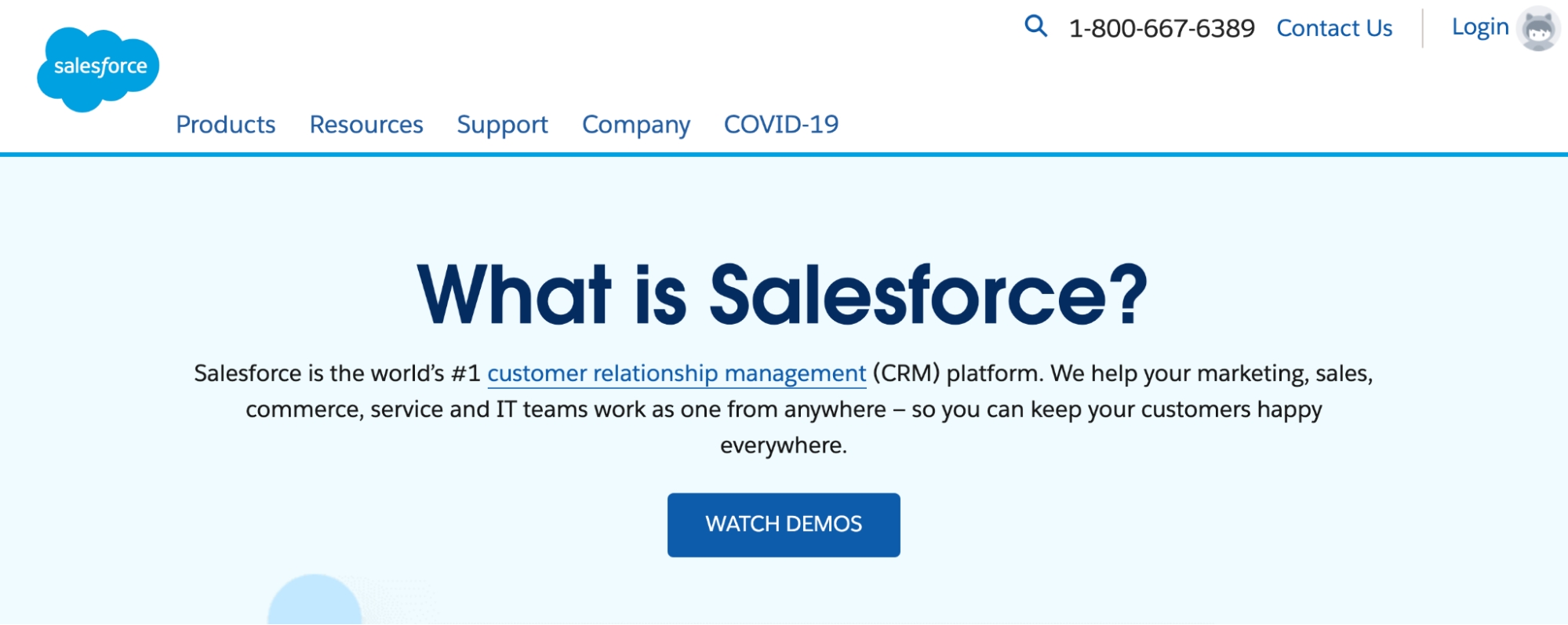
Other brands as well define Salesforce as a CRM company. Notice the keyword “CRM” is consistent in most places Salesforce is mentioned:

If you define your category well, you’ll have an advance over competitors, no matter how long they have been in the game.
The brand already has a section on its site that shows what Airtable is used for. However, it is buried in a part of the website called “Airtable Universe,” and it’s unlikely that visitors will find it. Little wonder the page generates six (6) organic search traffic every month, according to Ahrefs.
On the flip side, if Airtable pairs a new value proposition with an optimized Airtable universe, they’ll eliminate obstacles that keep visitors from understanding the product’s benefits and signing up right away.
If this category invention is done correctly, Wrike, ClickUp, and Trello would be seen as an entirely different type of product rather than direct Airtable competitors.
In that case, Airtable will own the category in no time, boost their positioning, engage prospects better, and see more qualified signups. Prospects will now see Airtable as a powerful triple-thread: spreadsheet + database + collaboration tool. And the brand will avoid direct product comparison until a real competitor springs up.
Conclusion
Here are some actionable tips from Airtable’s content marketing playbook:
- Create content with the searcher’s intent in mind. It should also speak directly to the different segments of your target audience.
- Incorporate social proof into your strategy. You can replicate Airtable’s social proof formula for a start.
- Create link-worthy content to earn high-quality backlinks.
- Define your market positioning clearly, so no one is confused about the value you offer.
You can create a killer content marketing strategy to position your product better and boost your product’s visibility. That way, you can attract the right people, educate prospects, and convert them to paying customers.
If you’re looking to set up a content marketing engine of your own to capitalize on search intent as Airtable did, you’ll want to check out our B2B Growth Academy. Its five modules are dedicated to helping you 10X your content marketing results.







